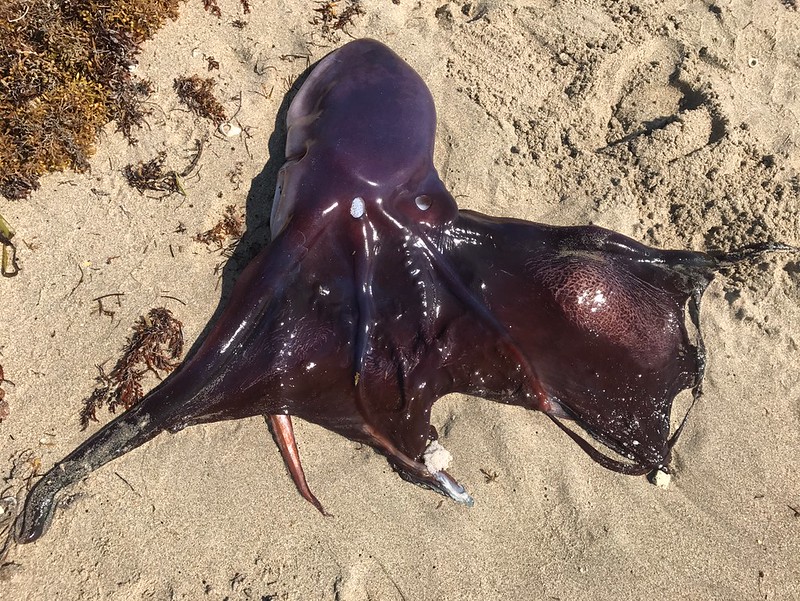Blanket Octopus Facts
- The Blanket Octopus, or Tremoctopus, forms a genus of pelagic cephalopods. Also, the genus contains four currently known species that occupy surface to mid-waters in subtropical and tropical oceans.
- The common name of the breathtaking creature, understandably, occurs due to the long transparent webs it develops. Further, these connect the dorsal and dorsolateral tentacles of the adult females.
- In fact, the other tentacles all develop significantly shorter and lack this unique type of webbing.
- Most notably, this fascinating cephalopod displays the greatest degree of gender-based size difference among non-microscopic animals known to man. That’s because females may be up to as much as 10,000 times the size of the male.
Related Articles
The Blanket Octopus Physical Description
Collectively, all of the known types of tremoctopus exhibit an extreme degree of sexual dimorphism. Indeed, females often reach 6.6 ft (2 m) in length, whereas the tiny males at most only reach a few centimeters in length.
The coloring varies, of course. This genus, like most of its relatives, has the ability to change color at will. However, the most common colors display include silvery sides and dark blue or purple surfaces.
In addition, the males have a specially modified third right tentacle which stores their sperm. Further, this special tentacle is known as a hectocotylus. This unique physical characteristic sets it apart from other related species.
- Kingdom: Animalia
- Phylum: Mollusca
- Class: Cephalopoda
- Order: Octopoda
- Family: Tremoctopodidae
- Genus: Tremoctopus
The Blanket Octopus Distribution, Habitat, and Ecology
Firstly, the Blanket Octopus inhabits all known tropical and sub-tropical waters of the world. It also appears to inhabit a wide range of depths, as well. This makes yet another way in it separates itself from most other octopi.
Interestingly, the Blanket Octopus is also immune to the poisonous Portuguese Man O’ War. Further, the tentacles of this species, the male and immature females actually rip off and use for defensive purposes.
Like many other octopuses, the blanket octopus uses ink to intimidate potential predators. Also, when in danger, the female unfurls her large net-like membranes that spread out and billow in the water, greatly increasing her apparent size which is an evolutionary adaptation unique to this species.
Rather oddly, the male dies shortly after mating is completed. But the females then carry over 100,000 tiny eggs. These she holds in a sausage-shaped calcareous secretion held at the base of the dorsal arms and carries until hatching.
Species Sharing Its Range
Check out our other articles on North American Gulches and Canyons, Black Rain Frog, Shark Bay, Monkey Puzzle Tree, Reticulated Python, Mitchell’s Satyr Butterfly, Pink Fairy Armadillo

